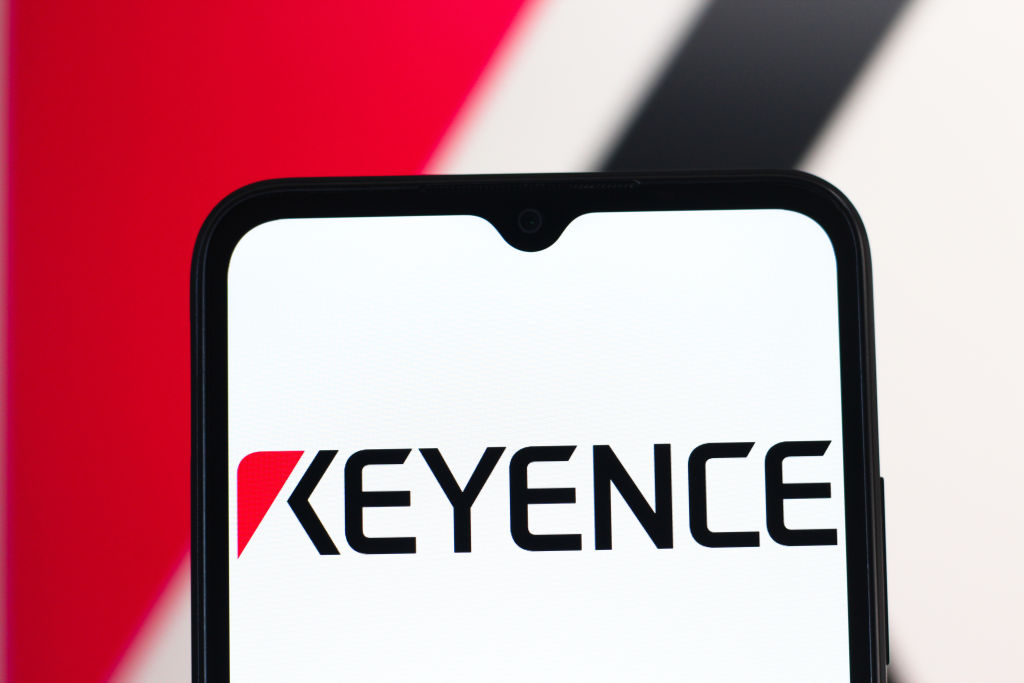The case for investing in Bitcoin in 2025
Bitcoin has shown it is no fad or bubble and is primed for further growth under Donald Trump. It has a valuable role in portfolios, especially when paired with gold


Bitcoin (BTC) has come a long way since its launch in January 2009. Today, there are BTC19.8 million worth $2 trillion, equivalent to the world’s sixth most valuable company, just below Alphabet and just above Saudi Aramco. An estimated one billion people own crypto assets, and blockchain data shows us that there are roughly one million active addresses each day.
Yet bitcoin remains controversial. The common criticisms relate to energy consumption, money laundering, volatility, tangibility and being a digital “tulip mania”. Still there has been progress: a few years ago, people described bitcoin as a Ponzi scheme, but few do today. Ponzi schemes are frauds, and bitcoin’s blockchain is fully transparent. Furthermore, Ponzi schemes tend to disguise volatility, unlike bitcoin, which proudly shows it off.
Money laundering is still cited as a negative, but the trouble with that idea is the bad actors always seem to get caught. When you interact with the blockchain, you leave behind a digital signature. Take Ross Ulbricht, the founder of the Silk Road website, an illegal online shop set up on the dark web in 2011. Selling guns and drugs didn’t go down too well, and in 2013, it was shut down. He remains in prison. If the authorities could trace him in 2013, imagine what they can do today.
MoneyWeek
Subscribe to MoneyWeek today and get your first six magazine issues absolutely FREE

Sign up to Money Morning
Don't miss the latest investment and personal finances news, market analysis, plus money-saving tips with our free twice-daily newsletter
Don't miss the latest investment and personal finances news, market analysis, plus money-saving tips with our free twice-daily newsletter
In 2014, US entrepreneur Tim Draper bought BTC30,000 confiscated from the Silk Road by US law enforcement, at auction for $19 million. Today, they are worth $3 billion as the price of bitcoin hovers around $100,000. But don’t cry for the US government: it is believed to still hold BTC198,109 confiscated from other crimes, which is currently worth $19.8 billion. The Chinese government is thought to hold BTC190,000, and the UK government holds BTC61,245 worth £6.1 billion, or nearly a third of the claimed fiscal black hole.
London’s missed opportunity on bitcoin
US president-elect Donald Trump plans to hold bitcoin in a US strategic reserve, presumably to sit next to the gold in Fort Knox. His administration is crypto-friendly, and I suspect the next four years will see innovation in crypto explode. Rishi Sunak, the former UK prime minister, tried to make Britain a crypto hub, but it was never to be. The regulatory divergence between the US and the UK has seemingly never been so wide.
One example is bitcoin exchange-traded funds (ETFs), which, after many court cases and political skullduggery, were launched on the US stock market in January. The iShares Bitcoin ETF now holds BTC540,000 worth $54 billion. It was the most successful ETF launch in the company’s history. The US also saw successful product launches by Fidelity and 21Shares.
The first bitcoin ETF was launched in Sweden in 2015 and is run by CoinShares. From 2019, there were multiple launches in Switzerland and Germany by 21Shares, Fidelity, Invesco, HANetf, VanEck, WisdomTree and others. The European bitcoin and crypto ETF scene is thriving, yet these products remain banned for private investors in the UK. Elective professional investors can legally buy bitcoin ETFs, but the investment platforms have blocked them, regardless. Since May, bitcoin ETFs have even been listed on the London Stock Exchange, but can only be traded by institutional investors. It is odd that London, a major financial centre, sits on the sidelines in what has become a $130 billion segment of the ETF industry.
What about bitcoin’s energy consumption?
Current consumption estimates from the Cambridge Bitcoin Electricity Consumption index are 21GW of power demand for an annualised consumption of 195TWh, which equates to 0.27% of the world’s energy consumption. With the value of the world’s assets estimated to be worth $516 trillion, bitcoin’s $2 trillion valuation makes up 0.4% of the total. An environmentalist with a capitalist leaning might consider that to be good value.
Consider which industries consume large amounts of energy. There are our homes, transportation, industry, construction and agriculture, all things we need. But there’s Las Vegas, cruise ships and travel. Are they bad, and if so, who decides? Then there are data centres, communications and artificial intelligence (AI). Data centres consume four times as much electricity as bitcoin and will need much more in the years ahead.
The important point is that to grow the economy, we need more energy, not less. Informed economists know that increasing energy consumption drives economic growth, productivity and incomes. Energy creates wealth, yet it has become vilified, as our political class believes there is another way ahead. There isn’t. A successful economy needs more stable and cheap power, not less, and the Trump administration acknowledges this in a way our UK and European masters do not.
Yet it is right to question what bitcoin’s energy consumption is for. The bitcoin network is protected and managed by the miners. Anyone can mine bitcoin. They don’t have to ask for permission, they just need some powerful chips and an electricity supply. This is known as proof of work and is why there is no bitcoin HQ and no chief executive or board of directors. Bitcoin is decentralised and, as a result, it cannot be shut down.
The bitcoin miners process the transactions and protect the network. There are public and private keys, which can be simplified as a username (public) and a password (private). The mathematics is complex and involves having to solve an elliptic curve. This is basically a cryptographic equation that cannot be solved in reverse. The miners’ computational power solves it iteratively, which means making quadrillions of guesses – a process that happens, on average, every 10 minutes. The first to solve it wins the block.
In 2009, the reward for one block was BTC50, and a miner could have used their home computer. As bitcoin grew, the process became more competitive, and as a result, the network became more secure. In 2012, a bitcoin halving – a process baked into the code – saw the block reward fall to BTC25, then BTC12.5 in 2016, BTC6.25 in 2020, and BTC3.125 as of last May. The total supply will never exceed 21 million.
The annual rate of new supply is 1% and falling. This gives investors confidence that bitcoin will remain a scarce asset, rather like gold, and so some deem it to be “digital gold”. Gold’s annual new supply growth is 2%, which it has averaged for more than 300 years, and was only exceeded during the California gold rush of 1848.
Comparing bitcoin with gold
Comparisons with gold are often made, and on the supply side, these assets have much in common. But the demand side differs widely. Gold’s primary buyers are the jewellery industry, central banks, and investors, both institutional and retail. Despite the successful launch of the US bitcoin ETFs, bitcoin remains largely a retail asset with interest from family offices and hedge funds, but mainstream fund managers are yet to engage. Of course, there’s El Salvador, where president Nayib Bukele proudly added bitcoin to the nation’s reserves. To say the World Bank was not amused would be an understatement. Still, El Salvador’s BTC5,748 has more than doubled, so who’s laughing now?
Why are institutions wary of bitcoin?
The resistance of institutional investors to embrace bitcoin remains a conundrum. In part, it is due to regulatory reasons, but a wider shadow ban exists. Institutional investors remain perplexed by bitcoin, wondering how it fits into their investment process. They look for yield, book value, and price/earnings ratios that simply aren’t there. Like gold, commodities, art, collectables and intangibles, bitcoin is an alternative asset. Alternative assets are not financial assets, and so financial metrics don’t apply.
No one questions gold’s lack of cash flow, yet the central banks – presumably experts in money – lap it up. It makes sense because you wouldn’t want an asset that is part of the financial system to protect you from the failure of that same financial system. Until 2008, most central banks opted for US Treasuries, gilts, bunds and other major government bonds as their preferred reserve assets. Since 2009, that has changed, and the non-OECD central banks have boosted their gold reserves like never before, led by the People’s Bank of China.
The world’s $18 trillion stockpile of gold compares with a $2 trillion stockpile of bitcoin. Crypto is catching up, but it has yet to be embraced by central banks. If Trump sets up a US Strategic Reserve for its bitcoin, I suspect that will begin to change, but it will take time.
Gold resumed its bull run in 2018 – one that began in 5,000 BC. The conservative central banks will take their time to embrace bitcoin. Perhaps they will never do so, because bitcoin is the asset that comes from the internet and is for the internet, whereas gold is from the real world and is for the real world. These are striking differences because while they have a similar limited supply, and high market liquidity, they are at odds in other ways. For example, bitcoin has followed the path of internet stocks (it moves very much in line with the Nasdaq index), whereas gold has always had more in common with bonds (the good ones, at least).
People often question bitcoin’s intrinsic value. We used to ask the same when, for example, Facebook bought WhatsApp for $3 billion. No one is asking that now because we have come to realise that digital networks are extremely valuable, and deservedly so. So it is not surprising that bitcoin is an inherent part of the tech trade and serves as the internet’s alternative asset. For starters, it trades 24/7, whereas our banks work 9am to 5pm on weekdays only, excluding holidays. The internet never sleeps.
This article was first published in MoneyWeek's magazine. Enjoy exclusive early access to news, opinion and analysis from our team of financial experts with a MoneyWeek subscription.
Get the latest financial news, insights and expert analysis from our award-winning MoneyWeek team, to help you understand what really matters when it comes to your finances.
-
 How to invest in water - and should you?
How to invest in water - and should you?The ultimate in liquid investments, water companies offer investors’ portfolios a range of benefits. How can you invest in water?
-
 Act now to avoid inheritance tax on your pension with this one simple change
Act now to avoid inheritance tax on your pension with this one simple changeA quick and easy paperwork change could avoid your children paying inheritance tax on your pension if you act now. Here’s how.
-
 The rise and fall of Nicolás Maduro, Venezuela's ruthless dictator
The rise and fall of Nicolás Maduro, Venezuela's ruthless dictatorNicolás Maduro is known for getting what he wants out of any situation. That might be a challenge now
-
 Polar Capital: a cheap, leveraged play on technology
Polar Capital: a cheap, leveraged play on technologyPolar Capital has carved out a niche in fund management and is reaping the benefits
-
 Vaccines inject billions into Big Pharma – how to profit from the sector
Vaccines inject billions into Big Pharma – how to profit from the sectorThe vaccines subsector received a big fillip from Covid, but its potential extends far beyond combating pandemics. Here's what it means for investors
-
 'Investors should keep putting their trust in investment trusts'
'Investors should keep putting their trust in investment trusts'Interview Peter Walls, manager of the Unicorn Mastertrust fund, analyses investment trusts in a conversation with Andrew Van Sickle
-
 Monks Investment Trust is worthy of the spotlight
Monks Investment Trust is worthy of the spotlightMonks Investment Trust, a global growth trust, sits in the shadow of its stablemate, Scottish Mortgage. But its record warrants attention, says Max King
-
 New year, same market forecasts
New year, same market forecastsForecasts from banks and brokers are as bullish as ever this year, but there is less conviction about the US, says Cris Sholto Heaton
-
 'Expect more policy U-turns from Keir Starmer'
'Expect more policy U-turns from Keir Starmer'Opinion Keir Starmer’s government quickly changes its mind as soon as it runs into any opposition. It isn't hard to work out where the next U-turns will come from
-
 Why does Donald Trump want Venezuela's oil?
Why does Donald Trump want Venezuela's oil?The US has seized control of Venezuelan oil. Why and to what end?
